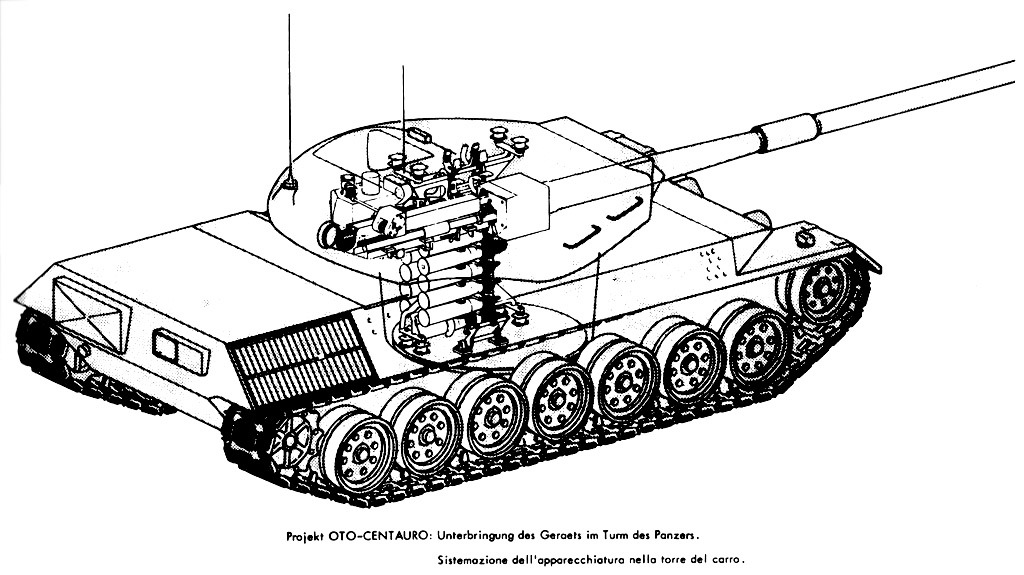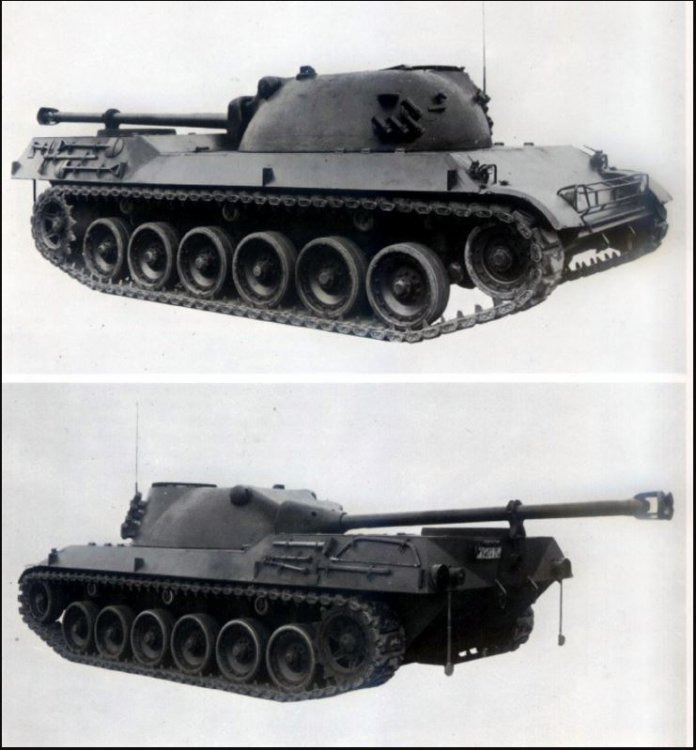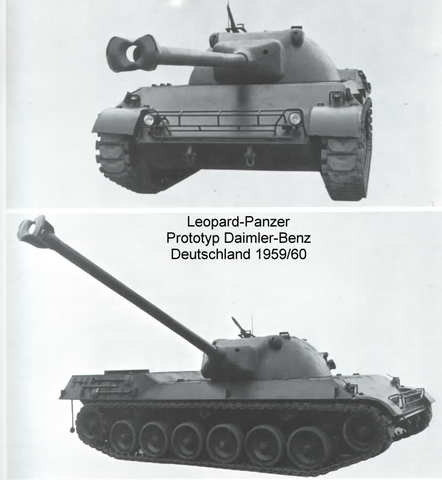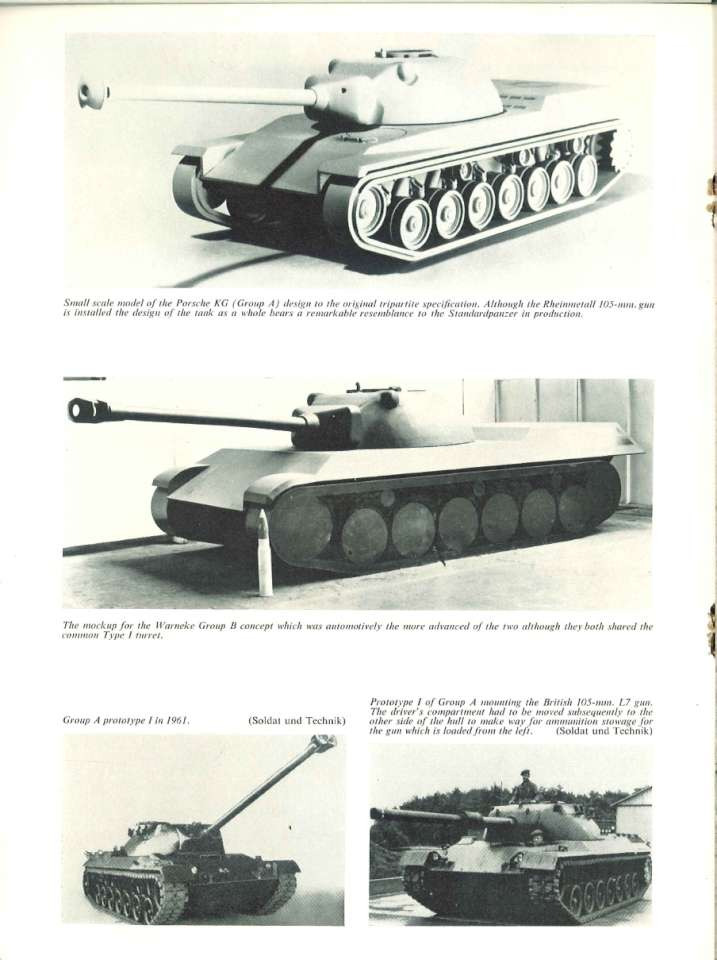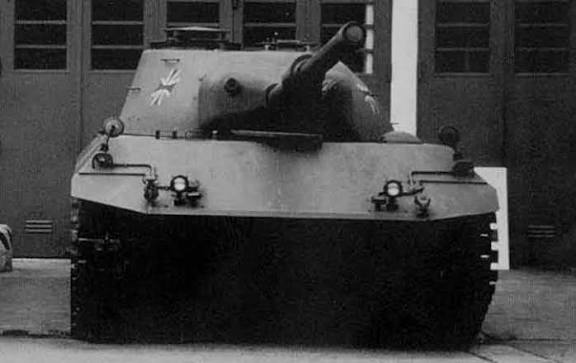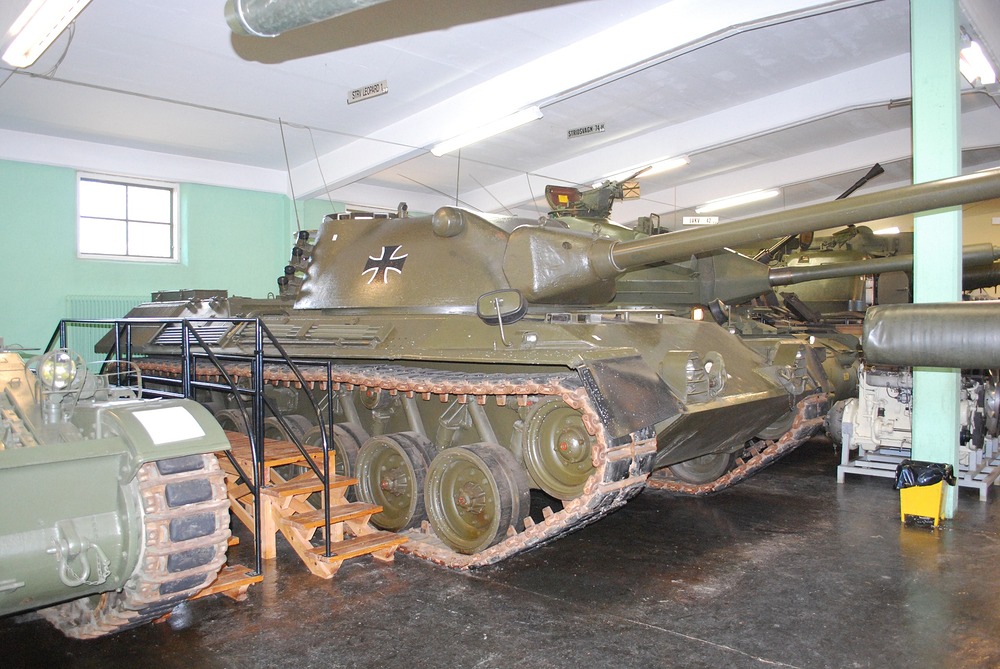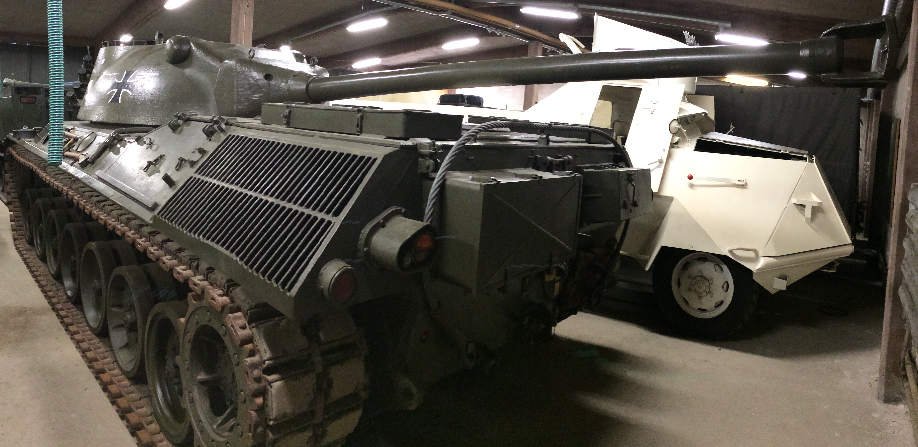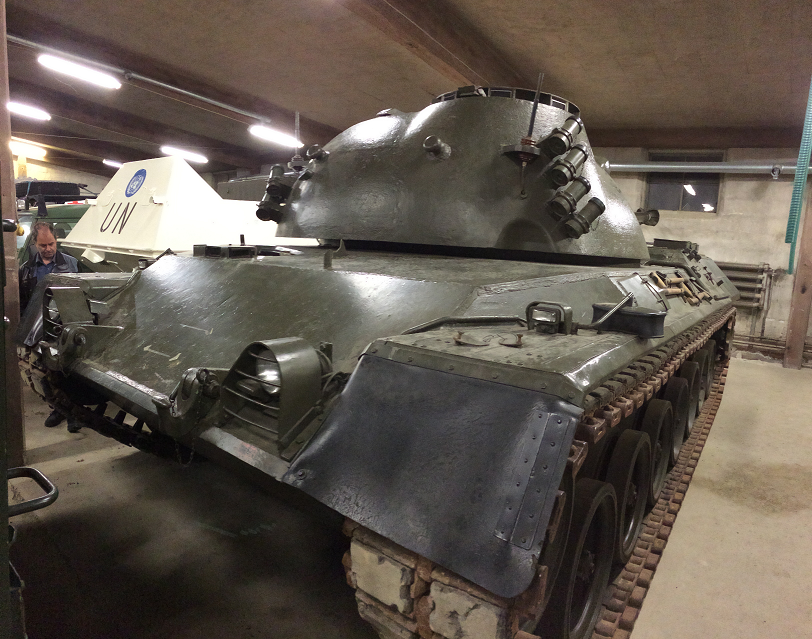
History and Introduction
TLDR: A leopard 1 prototype with a 90mm and hydropneumatic suspension
The Cold war was in full swing and many european militaries were all too aware of the lacking capabilities of their imported American equipment. The old M-47 and M48 pattons were beginning to show the end of their useful lifespans and nations were beginning to desire their own modern vehicles.
After much deliberation and cooperation, West Germany (FRG) and France decided to work together (oh no) to create the future main battle tank for their militaries as well as for export. Italy, seeing the potential for this project, soon joined in and contributed to the effort.
The program was started in November 1956, named Standard-Panzer, primarily intended, by the germans, to replace their stocks of Patton MBTs. The work continued from the start and only 1 year later, detailed specifications (requirements) for the program were released to possible companies willing to compete in the program.
This new design was a change in directino for the germans especially as they dropped the idea of prioritising heavy armour and instead chose to go ith the mobility and lethality. With the failure of the french AMX-50 project, France was eager to take part in the Europa-Panzer, as it was called in Germany, MBT project.
The competing companies enthusiastically presented their designs and were given a deman for to prototypes each.
Team A, from Porsche, presented 2 vehicles quite similar to the Leopard 1 that went into production.


Team B, from Ingenieurbüro Warneke, Rheinstahl Hanomag, Henschel and Rheinmetall, presented 2 vehicles which cannot be denied to be leopard 1s, but they were someways off.
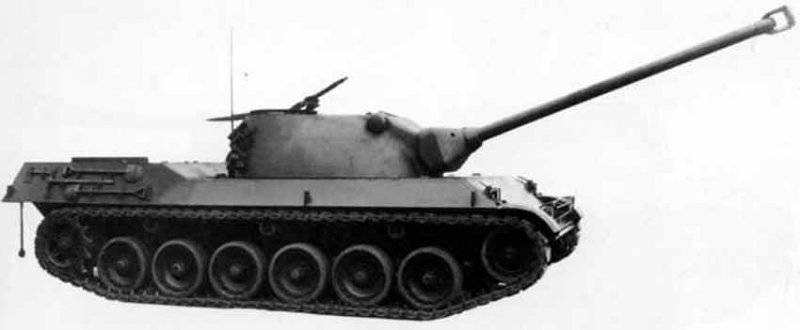
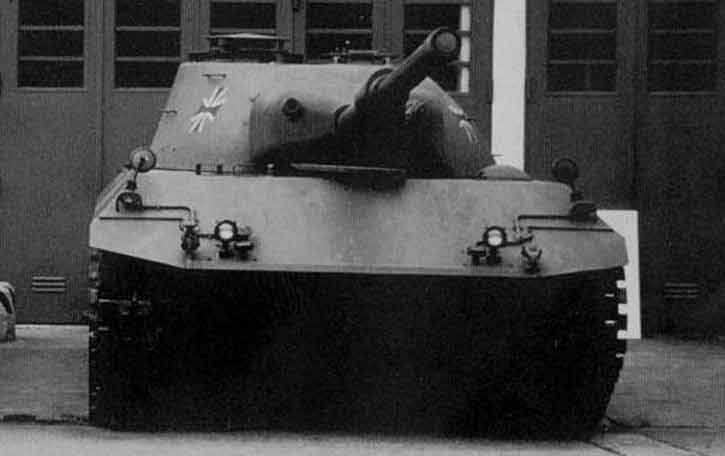
prototype B-1 (left), B-2 (right)
Team C, from Borgward, had presented blueprints for quite a futuristic tank, but they failed to produce a prototype within the given timeframe.
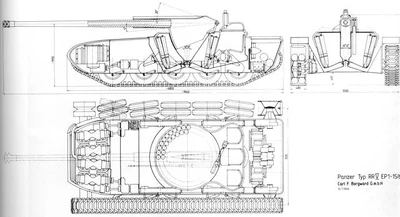
There was also Team D, primarily a design by the french, which later gave rise to the AMX-30, was not chosen for the German trials.
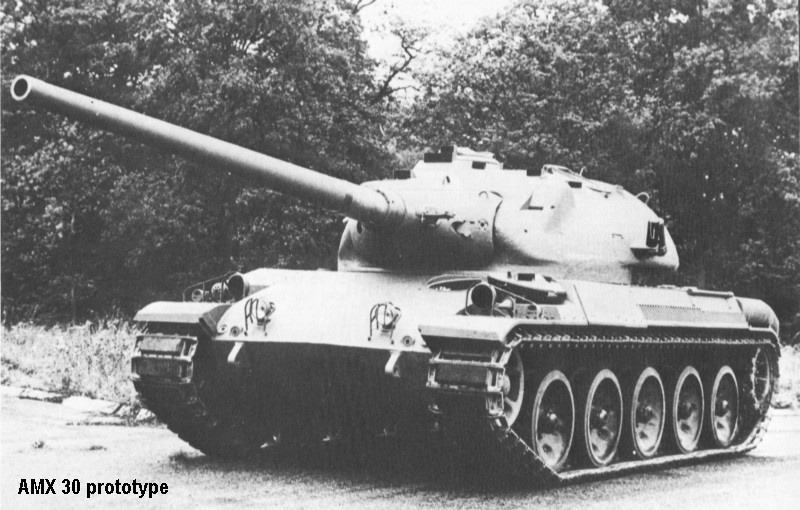
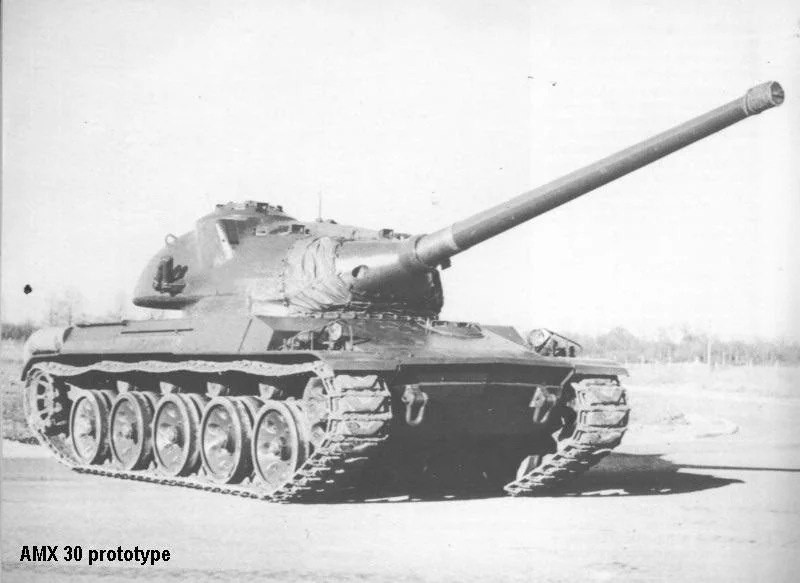
(All four prototypes (A-1, A-2, B-1, B-2) were initially armed with the 90mm gun).
Eventually, the winner of the competition, (after multiple stages of trials commonly referred to as series I, II and III (each with their own prototypes)) Porsche, who had been already ordered to produce around 50 prototypes, was chosen to produce the final, production leopard 1.
However, the vehicles presented by Team B (Rheinmetall), were by no means something to gloss over.
Unlike any other leopard 1, the B prototype had an interesting engine design as what I assume is the intake for the radiator was located on the top center of the engine deck.
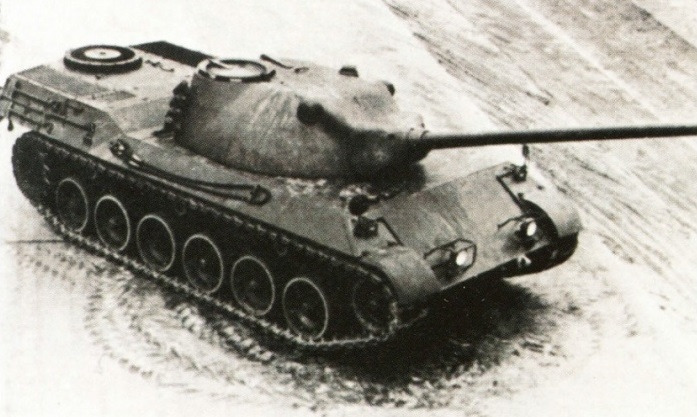
Prototype B-1 may have been armed with a simple 90mm and no stabiliser, however, the italians had a little something to contribute into the design. An autoloader was installed according to some sources, while according to others, it was only planned or designed.
Overall the B prototype was quite formidable. Hydropneumatic suspension, Autoloader, a decent power to weight ratio and a stereoscopic rangefinder.
In the series 2 trials, the Leopard PT B-1 was modified to have similar grills (engine radiator intakes i presume) as the standard leopard 1.
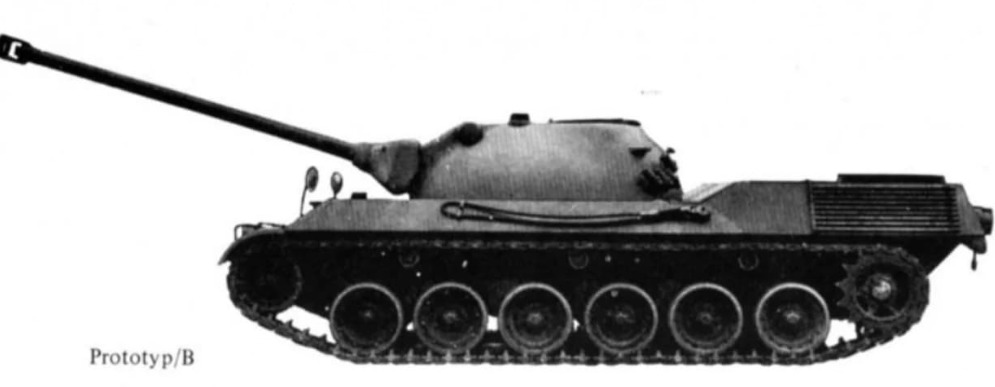
It seems that the PT B-1 turret was also trialled on a series II hull and now rests in that configuration in the Pansarmuseet, in Axvall, Sweden.
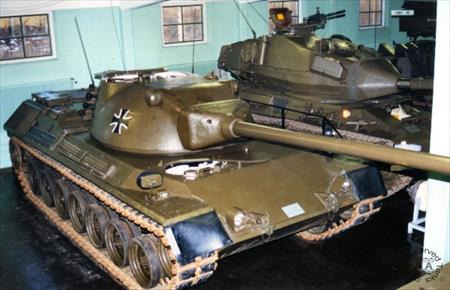
The Leopard PT B-1 would make an amazing gap filler between the Panther at 6.0 and leopard 1 at 8.0.
Testing
During trials it was found that the Porsche design was more preferrable considering all the features, including production. Although the PT B was technologically superior, the overall benefits it rovided mayhave been overshadowed by the increase in complexity and production costs as well as crew training time.
Technical Specifications
Armour
Turret: 60mm all round
Hull:
- Front: 50mm
- Sides: 25mm
- Rear: 15mm
Crew: 4 (Driver, Commander, Gunner, Loader)
— Mobility —
Weight: 35.8t (maximum)
Engine: Daimler-Benz 37.33 liter MB838 Ca-500 10-cylinder
Power: 830hp
Top speed: 63kmph
Power/weight: 23.13hp/t
Transmission: Pub PP45 lamellae clutch; five forward and five reverse gears
Suspension: Hydropneumatic suspension
Maximum gradient: 60%
— Armament —
Main gun: 90 mm Rheinmetall BK90 (not the BK90/L40 but a longer barrel)
Secondary gun(s): 2 x MG3
Elevation: +X/-9
Traverse: 360°
Gun sight: Unknown zooms
Laser range finder: No
Thermals: No
NVD: No
— Ammunition —
- 90mm
Count: >63
Types and performance: (since its a parrallel to the M47/48s 90mm)
- APCBC (M82) (or german domestic equivalent)
- APCR (M332) (or german domestic equivalent)
- HEAT-FS (M431) (or german domestic equivalent)
- HE (M71A1) (or german domestic equivalent)
- 7.62mm MG3
Count: 100? (2400 rounds total carried)
Rate of fire: 1200 rpm
Types and performance:

Sources
- Leopard, by AJ Barker
- Tankograd: Leopard 1 in German service, Early years
- Draft Standardpanzer. Prototypes of tank Leopard 1
- https://cloud.mail.ru/public/9dEX/djuwzbp4V/Wehrtechnik/1973%20not%20renamed/10/IMG_20210925_123926.jpg
- 90mm standardpanzer prototype - Google Zoeken
- Postwar German Experimental tanks | Secret Projects Forum
- https://www.youtube.com/watch?v=CdL9uuvDRls
- Проект Standardpanzer. Прототипы танка Leopard 1 - Альтернативная История
- Каким мог стать немецкий ОБТ "Леопард" - Альтернативная История
- Leopard 1 Geschichte
- Yes
- No

